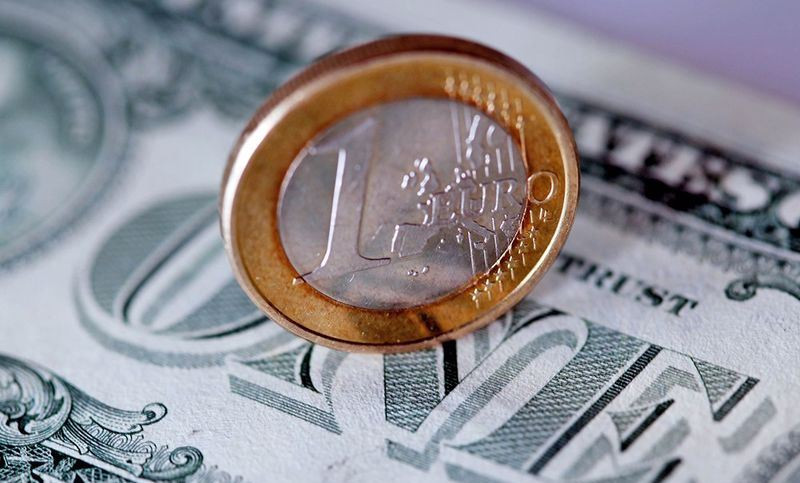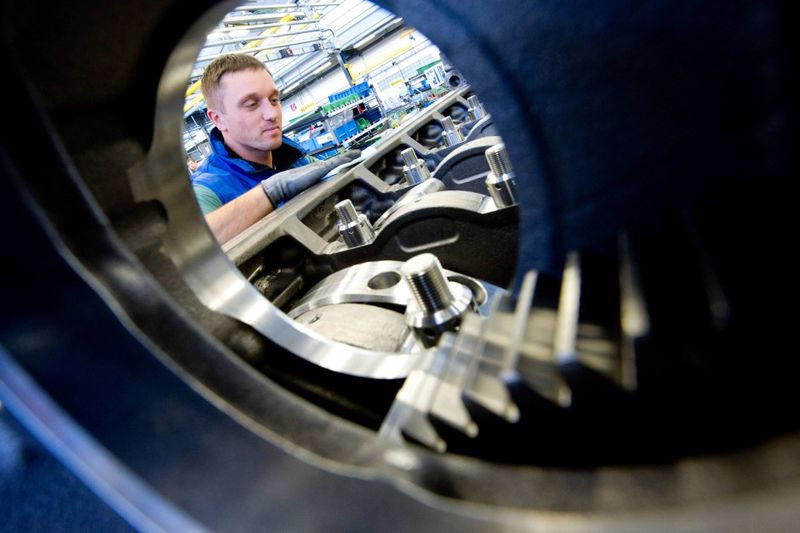
The greenback confidently pushed its competitors at the beginning of the week. Investors were forced to pay attention to the protective US currency by fears for the fate of the global economy, as well as hawkish expectations from the Federal Reserve symposium in Jackson Hole.
Ahead of this event, speculators' net long positions on USD rose for the first time in four weeks, according to the latest report from the US Commodity Futures Trading Commission.
The CFTC data also showed that net short positions on the euro jumped to the highest values since February 2020.
"No one will be surprised by the trend towards selling euros, which cannot be said about the scale of short positions on EUR. Bearish sentiment towards the euro has reached levels not seen since when the world was gripped by a Covid panic. Apparently, investors are under pressure from pessimism about the economic situation in Europe," said strategists at Bank of New York Mellon.
"In 2020, holders of short positions on the euro lost because the currency grew along with the recovery of the global economy. But this time selling euros looks like the right strategy," they added.
The greenback enjoyed demand as a safe haven asset on Monday, and the single currency was tripped up by the news that Russia would stop supplying natural gas to Europe via the Nord Stream-1 pipeline for three days at the end of the month.
This was another reminder of the unreliable state of the energy supply of the eurozone and added fuel to the fire of the decline in EUR/USD, aggravated by the strengthening of the dollar on a broad front.
As a result, the main currency pair ended the first working day of the week below the 1.0000 mark for the first time since December 2002.
The rally of the US currency was exhausted on Tuesday, and the EUR/USD pair entered the consolidation phase without receiving a new impulse to decline.
The data released on this day from S&P Global reflected that the composite eurozone PMI index sank to 49.2 points in August against the previous value of 49.9 points. The same indicator for the United States fell to 45 points from 47.7 points in July.
On the one hand, the eurozone PMI data hinted that the region's economy will show negative growth rates in the third quarter.
On the other hand, investors considered the weakening of business activity in the United States another argument in favor of easing the Fed's position.

"Despite the new gains made against the euro this week, the dollar has still not exceeded the July highs. Perhaps the greenback will need more energy to overcome this obstacle," Insight Investment analysts said.
According to them, traders are now focused on the transatlantic difference in energy prices.
According to some estimates, natural gas prices in Europe are currently eight times higher than in the United States.
"Although the energy price shock hit the euro again this week, business surveys in Europe for August have not yet shown a significant lag behind the United States," Insight Investment analysts said.
They think the dollar still looks very expensive.
"Valuations are extremely inflated for the dollar. The US currency is overvalued by about 20% according to fair value models. This is an extreme level in the last 30 years. Being long in a currency that is overvalued by 20% is an uncomfortable position for any investor. Excessive positioning in USD will not stop its growth, but it will make it difficult to profit from here," Insight Investment believes.
There were no important releases on the eurozone on Wednesday, and data on orders for durable goods in the United States for July had a mixed effect on investor sentiment.
So, the main indicator remained at the same level last month, while experts expected an increase in orders by 0.6%. At the same time, the base indicator increased by 0.4% against the predicted rise of 0.3%.
As a result, the greenback retained its positions, and the EUR/USD pair closed Wednesday almost flat around 0.9965.
At the beginning of Thursday's trading, the euro against the US dollar rose to a local high around $1.0030.
The single currency was supported by positive news from China, whose authorities promised to strengthen economic support measures.
"The main reason for the weakness of the US dollar was the temporary easing of concerns about global growth," MUFG analysts said.
However, the euro retreated quite quickly, allowing the dollar to regain lost positions.

The EUR/USD pair returned to the area below parity after data from Germany showed that the IFO business climate index in the country fell to 88.5 points in August from 88.7 points in July. The value of the indicator reached its lowest level since June 2020.
At the same time, IFO representatives said that a recession in Germany is still possible, and added that they expect the national economy to shrink by 0.5% in the third quarter.
Meanwhile, the US published its second estimate of GDP for the second quarter, which was revised upward from -0.9% to -0.6%.
Although these data once again indicated that the American economy has fallen into a technical recession, the market reaction to the report was restrained.
The fact is that the Fed has made it clear that it is ready to risk even a recession to keep prices from rising.
At the moment, the futures market expects the Fed to continue raising the rate to 3.75%. At the same time, futures at the ECB rate are at a level not higher than 1.25%.
Concerns about economic growth in the eurozone are fueling the weakness of the single currency, as traders bet that this will limit the European Central Bank's ability to tighten policy.
"The August data on business activity in the eurozone indicates that the region's economy is rapidly moving towards recession. This makes the situation much more complicated for the ECB, but we think it will still raise rates by 50 basis points in September. After that, the rapid cooling of the economy will force the central bank to suspend its rate hike cycle, if you can call it that," ING strategists believe.
In addition to the fact that the pace of rate hikes in the eurozone is significantly lagging behind the pace of policy tightening in the United States, pressure on the single currency is exerted by rising gas prices, which can provoke an energy crisis in the countries of the currency bloc.
Gas prices in Europe exceeded $3,200 per thousand cubic meters on Thursday,. This is the highest level since the beginning of March.
"The sharp increase in natural gas prices in Europe coincided with the weakening of the euro against the US dollar during the summer," Capital Economics analysts noted.
This week, the euro against the dollar fell below $1.0 for the second time this year. The first fall of EUR/USD below parity in July turned out to be short-lived, but now experts expect a long period of euro weakness.
"As the EUR/USD pair is trading below the symbolic parity level again, we believe it is increasingly likely that the deterioration of the eurozone's economic problems will lead to a prolonged period of weakening of the euro," Capital Economics said.
At the same time, the immediate price movement may well depend on the tone set by Fed Chairman Jerome Powell in his Friday speech at the Jackson Hole symposium.

Currently, the futures market expects that the US central bank will raise the key rate by about 65 basis points in September, which means that Powell has the opportunity to influence traders to raise their expectations to another 75 bps hike.
In this scenario, the dollar may resume its recent rally and break through the July high.
"We expect that Powell will maintain a very hawkish tone at the symposium," Brown Brothers Harriman analysts said.
They predict that USD may rise towards the level of 121 when the July high breaks in the area of 109.30, and the EUR/USD pair will challenge the September 2002 low in the area of 0.9615.
It is possible that Powell will not give an explicit signal about the future policy of the central bank and will leave all options open at the FOMC meeting in September.
In this case, Powell's speech will be considered insufficiently hawkish, and we will see some dollar pullback. This will allow the main currency pair to recover in the short term.
Meanwhile, the strategists of Capital Economics believe that it is the European side of the equation that is more important for the EUR/USD exchange rate.
"The ECB's attempt to implement a hawkish shift has not been successful, and its latest forecasts already look too optimistic both in terms of inflation and economic growth," they said.
The economic prospects of the eurozone have recently deteriorated significantly amid a sharp rise in gas prices in the region.
"While earlier this year the price of natural gas with delivery in the coming months basically jumped, in recent months the price of gas with delivery next year has also increased. In some energy-intensive industries, several factories have already been closed, and it is quite possible that more will follow," Capital Economics analysts said.
"At the moment, the main and perhaps the only argument in favor of the euro is that many bad news has already been taken into account in the exchange rate. But given that the shock from the terms of trade is starting to look, at least partially, permanent, we believe that the risks for the euro remain shifted downward," they added.
Societe Generale analysts give a bearish forecast for EUR/USD in the near future, pointing to the risks of deepening the European gas crisis.
"In the case of the United States, rising energy prices have a positive impact on the dollar; for the eurozone, this only underscores the scale of the problem facing the continent and dominating the single currency. We do not expect a significant increase in the euro until the eurozone overcomes the gas crisis. According to our current forecasts, the EUR/USD pair will reach the bottom in the third quarter in the range of 0.9500-1.000, and although this level may be approximately correct, it has now become more difficult to expect any rebound before the end of this year," they said.
 English
English 
 Русский
Русский Bahasa Indonesia
Bahasa Indonesia Bahasa Malay
Bahasa Malay ไทย
ไทย Español
Español Deutsch
Deutsch Български
Български Français
Français Tiếng Việt
Tiếng Việt 中文
中文 বাংলা
বাংলা हिन्दी
हिन्दी Čeština
Čeština Українська
Українська Română
Română

